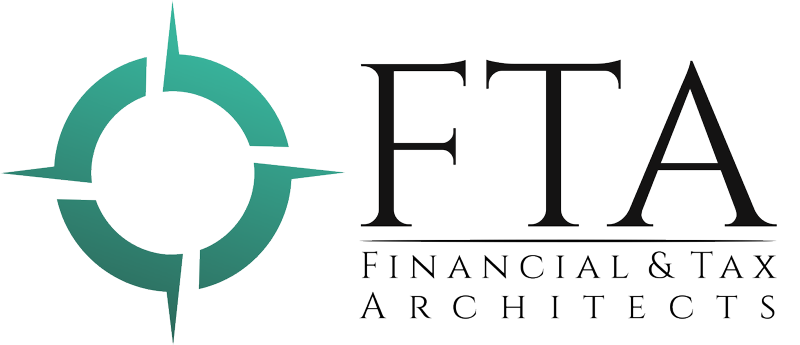Are Your Retirement Plans SECURE Now?
5 MIN. READ
It has never been easier to secure your future than with the SECURE Act! The “Setting Every Community Up for Retirement Enhancement” Act of 2019, or the SECURE Act, is part of a government spending bill that was signed in January 2020. It is intended to strengthen retirement security throughout the United States, and it affects the majority of those saving for retirement. Fortunately, many of the regulatory changes in the Act offer more flexibility and more opportunities to maximize your savings. Here’s how it works and how it may impact you.
The SECURE Act of 2019
The Act gives broader access to tax-advantaged accounts and assists in helping older Americans avoid outliving their assets. Among the important provisions that can affect your retirement are:
- The age for required minimum distributions (RMDs) has been extended from 70.5 to 72.
- The age limit on contributions to traditional IRAs has been removed.
Given that many people are now working past 70,the removal of the age limit on contributions is an important change. Individuals working past 70 are now be able to make contributions to their traditional IRA accounts. This is particularly meaningful for couples who are now able to make the higher contributions for older Americans. It allows couples to make up to a $14,000 contribution annually.
As for the changes to RMDs, the ability to delay having to take a distribution for an additional 18 months may reduce that tax impact for those in their early 70’s. Those who turned 70.5 in 2019 or 2020, however, are still required to take a RMDs for those years. If you fall in this group, make sure you take your RMDs to avoid the 50% penalty.
The new benefit for part-time workers
In addition, the Act brought a welcome change for long-term, part-time workers. It requires that workers who qualify as long-term part-time employees are eligible tp participate in qualified plans. Employers must now offer part-timer workers 21 years or older, who worked more than 500 hours in the past three consecutive years, the option to be included in the company retirement plans. If you’ve maintained a long-term, part-time position, you should consider participating in your employer’s plan.
New child withdrawals
The SECURE Act also adds a penalty-free withdrawal of up to $5,000 for the adoption or birth of a child. It should be noted, however, that you must make the withdrawal after the birth or adoption. You can’t use the funds in anticipation of those expenses. Additionally, the provision applies to both parents so, if you have two separate retirement accounts, you can each withdraw up to $5,000 without incurring the 10% early withdrawal penalty.
Additionally, if there are multiple births or adoptions (that is, twins or other multiples), each parent can withdraw up to $5,000 per child penalty-free. Another option is to treat the withdrawal as a loan and can repay the funds rather than treating them as a penalty-free withdrawal.
Disaster relief distributions
The SECURE Act provides relief to those who make withdrawals from their retirement accounts due to a natural disaster. Payback times on loans have been extended, as have tax payment requirements on distributions.
Difficulty of care payments
Caregivers may be eligible for “difficulty of care” payments, which, under IRS rules, are not taxable income and are ineligible as income for IRA contributions. The Act allows you to use such payments as the basis for IRA contributions, allowing you to begin making contributions toward retirement.
Use of annuities
Another change wrought by the SECURE Act is the ability to use annuities in 401(k) plans. The Act makes the issuing insurance company responsible for offering appropriate annuities to the plans, rather than assigning fiduciary liability to the employer for annuity selection.
Some applaud the addition, in that the annuities can provide a guaranteed stream of long-term income. Others are less enthusiastic, saying plan participants should be sure to work with a financial advisor in order to assure that any annuity chosen will work to the participant’s benefit. Financial & Tax Architects can help you navigate this situation.
Key takeaways
So, what actions should you take to advantage of these changes?
- Consider starting to make IRA contributions again if you were previously age ineligible. The deduction for a married couple who both have eligible accounts could equal $14,000 annually, a potentially substantial tax planning factor.
- If you have been working part-time for the past three years for an employer that offers a 401(k), you should start participating, particularly if you expect to continue working.
- If you became a parent in 2020 and are a little tight on funds, as most are with a new child, consider using the new $5,000 penalty-free withdrawal. Remember, each parent can potentially receive $5,000 per child. Whether taken as a penalty-free withdrawal or a loan repayable over three years, those funds can be vital in making a home for a new child.
- If your plan offers, or begins to offer, annuities, consider whether it could add value to your retirement plan. Annuities are complex, and even more so in a 401(k), so it might be worth working with a financial professional like Financial & Tax Architects to determine whether some portion of your retirement income should be guaranteed for a lifetime.
SECURE-ing your security
All in all, the SECURE Act offers potentially significant benefits for retirement savers and retirees. A financial professional like Financial & Tax Architects can help you examine your existing plan and make suggestions for taking advantage of the changes to make your retirement even better.
To learn more about how Financial & Tax Architects can help you, contact us today.






